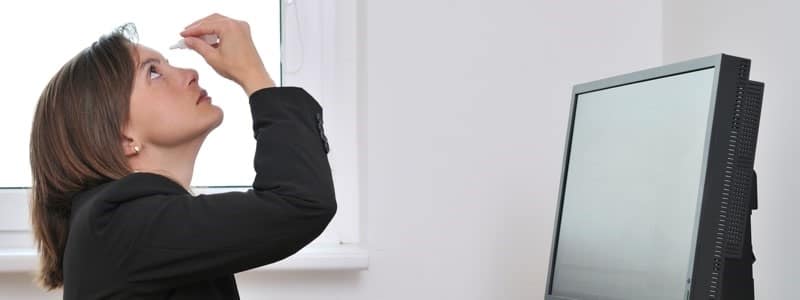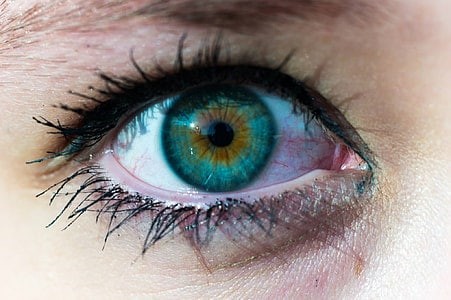Things to keep in mind about our eye health this Covid-19
With Covid-19 remaining the most pertinent issue today, our whole lifestyle has been altered accordingly. Not just this but other health issues are also prevailing with time, equally putting human health at risk. But with Covid-19 not going anywhere soon, the work from home hubbub has started and is gone good globally. But there debate on how work from home creates distress amongst people as not everybody is accustomed to working 8 – 9 hours straight looking on computer screens. Even jobs like teachers or retailers are trying to manage their professions online. Most people who are newly starting to do their work from home are experiencing a lot of issues of eye strain. Even people who had to experience working for such a long time in front of screens reported a gradual increase in feeling their eye strain. This is because earlier only work had to be on screens, now there are no designated breaks between office time and leisure time, no breaks to give the eyes a rest. Before you start to ponder, let us answer the question that would have come to your mind:
What is eye strain?
It is the condition where your eyes feel tired from being overused. It can be due to driving long distances or glaring at screens too much. Eye strain is only a consequence of an extended visual activity, and there are many ways we can follow to avoid it. Some of these tips are:
~ Follow the 20-20-20 rule:
This is one rule that everyone must gain familiarity with. One thing to do here is to look every 20 minutes away from your screen for 20 seconds and at least 20 feet away.
~ Blink away:
Remember to at least blink 10-15 times each minute. This helps in keeping your eyes moist.
~ Control the brightness:
Always keep the brightness up to the level of your surroundings, not too low or bright.
~ Avoid excessive glare:
Use an anti-glare shield that will help protect your eyes from excessive glare that the screen may provide.
~ Always note the computer screen’s position:
It is crucial to keep your desktop at a lower eye level and an arm’s distance.
~ Well-intended break:
For your vision, it is essential to take a 15-minute break for every two hours that you spend on your computer.
It is important to note that not keeping care of our eyes in times like this where screen time has just doubled can lead us to more significant problems like dry eyes. Let us explain what you can do if you face a dry eye syndrome since it is also becoming prevalent with time.
What to do about your Dry Eyes?
Having a dry eye is like having a rash in your eye, like your actual eye! Sounds hurtful, doesn’t it? Dry eye can be a temporary situation or a chronic one depending on its severity; it happens when your tear glands don’t produce enough tears or when your tears evaporate quickly. It causes a lot of complications, like double vision or infections. It is a blessing that its relief is available. But before we begin with what to do about your dry eyes, let’s understand what dry eyes are, how it is caused, its symptoms, and how it can be treated.
So, what are dry eyes?
Dry eyes are caused when your tear glands do not produce enough tears that can lubricate your eyes. This situation is very uncomfortable or painful to the patient and can be caused by medical or environmental factors. It is usually called having a dry eye syndrome and can be caused due to inadequate quality tears or diminished tear production.
Our eyes are producing tears all the time, not just when we feel hysterical or yawning because healthy eyes are always covered in a healthy fluid because of the tear film. It is between each blink and prevents the eyes from becoming dry and enables a clear vision. When tear glands produce fewer tears than required, then tear film tends to become unstable, leading it to break down quickly, and the creation of dry spots on your eye’s surface.
Contrary to popular belief that tears are just salty water droplets, tears are made of water to provide moisture, oils for providing lubrication, mucus to spread evenly, antibodies, and unique proteins that keep infection at bay.
Having dry eye syndrome is a chronic and gradually developing condition over time, but it all depends on its severity. Sometimes, it is not curable. Most cases are managed successfully by resulting in greater comfort, only a few dry eye symptoms, and sometimes a sharper vision.
What are the common symptoms of dry eye syndrome?
Some of the common symptoms of dry eye are:
~ A dry, burning, scratchy, and painful feeling in both the eyes
~ redness
~ having difficulty in keeping eyes open
~ double vision
~ A constant sense of something in the eye
~ sensitivity to light
~ mucus in or around your eyes
~ eyes feeling fatigued
~ blurred vision
~ eyelids stuck and difficulty to open them while waking up
What are the medications provided for dry eye syndrome?
Medicines prescribed for dry eye syndrome are:
~ Artificial Tears or Lubricating eye drops:
Artificial tears lubricate your eyes and help them maintain moisture on the outer surface. This is one of the best ways to help moisten your eyes, very effective and convenient, that your doctor might suggest mostly for dry eyes unless more severe methods need incorporation.
~ Medication to reduce eyelid inflammation:
Inflammation that is seen along the edge of your eyelids can keep the oil glands from secreting oil into your tears. Your doctor can recommend antibiotics to reduce it. The medication can be in the form of eye drops, eye ointments, and antibiotic pills. Also, regular cleaning of the eyelids is strongly recommended, for that you can use a non-eye irritating soap, like baby shampoo, etc.
~ Eye drops to control cornea from getting inflamed:
Inflammation can occur on the cornea of the eye (surface) that can be controlled with eye drops prescribed by the doctor. Those eye drops contain an immune-suppressing medication called cyclosporine (Restasis) or corticosteroids. However, corticosteroids are not ideal long term usage.
~ Moisturizing punctual tear duct plugs:
Those who have moderate to severe dry eye symptoms and artificial tears don’t help much when the other option can be to put the tiny eye insert that looks like a string can be placed in your tear duct. Some are made of permanent material, and some from dissolving collagen or collagen-like material.
~ Eye Inserts:
In this, you have to set the hydroxypropyl cellulose or Lacrisert between your lower eyelid and your eye. This is dissolved slowly and releases a substance that’s used in eye drops to lubricate eyes.
~ Eye drops from your blood:
Also called autologous blood serum drops, they are used when no other treatment is responding, and the condition is severe. These eye drops are then used by removing the red blood cells, and then it’s mixed with a salt solution.
What is Macular Degeneration?
Another disease growing common and is Macular Degeneration is a chronic disease that can last for years or stay lifelong. It causes vision loss that too in the center of the field of vision. But the question here arises what is Macular Degeneration, and is there some way we can prevent it?
Macular degeneration is a disease where the macula (central position of the retina), the light-sensitive layer of the tissue found at the back of the eye, responsible for the central vision, starts to deteriorate. It is one of the conditions that mostly occurs after 60 years and is often called an age-related macular generation (AMD). It is not painful but causes vision loss in both the eyes; the degree can vary but occurs in both. Two types of Macular Degeneration or AMD: first is dry AMD and wet AMD. The two types are explained below:
~ Dry AMD:
In dry, people have yellow deposits (drusen) in their macula. The small macula may not affect your vision, but it may affect your vision by making it dim or distorted if they get bigger and more. The condition worsens when the cells in your macula die by getting thinner progressively. It then turns into having blind spots in the center of your vision and eventually losing central vision.
~ Wet AMD:
It occurs when blood vessels grow from underneath your macula. Blood and fluids are leaked through these blood vessels. The straight lines might look wavy to you, some blind spots may appear, and there would be a loss of central vision. A scar is formed due to these blood vessels bleeding, which can lead to a permanent loss of central vision.
How can we prevent Macular Degeneration?
Some tips to help with this are:
~ A healthy lifestyle and weight should be maintained
~ Smoking should be prohibited
~ Diet should include green leafy vegetables, citrus, and bright colored fruits, fish, and whole grains
~ Exercise should be given the main priority
~ Eye exam should be done annually if a condition detected than as per doctor’s recommendation
~ Blood pressure and cholesterol levels should be maintained
~ Sunglasses or protective eye care to protect eyes from UV and blue light
~ Keep testing your Amsler grid; it means to check if you can stare at a paper grid and see it normally, contact your doctor if you see them wavy or disproportionate
~ Refined carbohydrates should be removed from your diet
~ Multivitamin should be added to your diet which is specially made for AMD called AREDS





Leave a Reply
Want to join the discussion?Feel free to contribute!